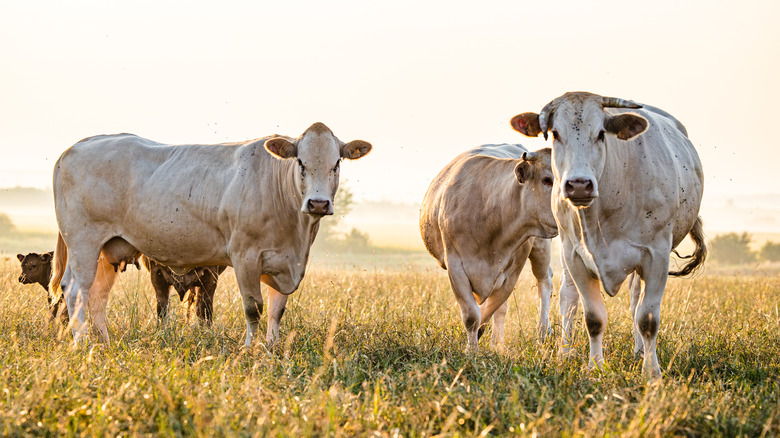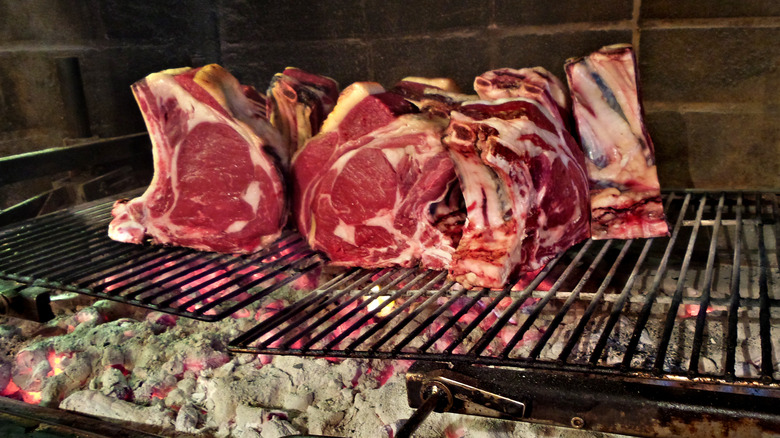The Famous Cut Of Steak That Comes From Italy's Prized Chianina
Even those who have not been to Florence, Italy know that it is home to some of the greatest artwork in the entire world. While the great paintings and sculptures are reserved for museums, the trattorias and restaurants are home to the city's greatest culinary masterpiece, the utterly enormous and succulent, bistecca alla fiorentina. There is no steak quite like it anywhere else in the world, and there are no cattle in Italy more prized for providing the meat for a bistecca than the chianina.
The chianina is a cattle breed specific to the rolling hills of the Chiana Valley in southern Tuscany. The largest breed of cattle in the world, with some weighing nearly 3,000 pounds, chianina are distinguished by their gleaming white coats, massive, defined muscle size, and the quality of the meat.
The bistecca, which is just one of the many cuts you can get from the chianina, has been a staple of Florentine life since the 16th century. The cut is basically an enormous version of a T-bone steak, measuring between 1.5 and 3 inches thick and weighing just over 2 pounds. In Tuscany, the meat needs to speak for itself, which is why there is a very specific, time-honored way of making a bistecca.
Traditional bistecca alla fiorentina
There is a way of cooking bistecca alla fiorentina that goes against some of the steak rules we're come accustomed to. First and foremost, the meat is not tampered with in any way before it is cooked. No salt rubs. No seasonings of any kind. It is believed that the meat of the chianina is of such outstanding quality that it should be able to speak for itself. There is a primal quality about it, not only in its size but in its approach to cooking.
The bistecca is thrown onto a grill over hot coals. There it will stay, being turned and charred for just a few minutes on each side, before it is rested and lightly seasoned with flaky salt and olive oil. Tuscans call this cooking method "strictly to the blood," which means that the bistecca is cooked rare, with the meat red and bloody in the center. The result is meat that is tender and melt-in-the-mouth tasty.

